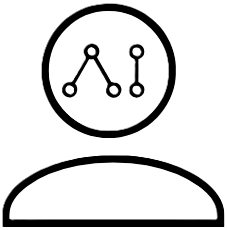AI and machine learning have taken the world by storm. These trending domains sit at the core of many groundbreaking technological advancements in this digital era. Curious how you can master them? This simple guide can get you started on a journey of learning AI and machine learning in the most efficient ways.
Setting the Course: Know Your Domains
Before you start exploring, it’s important to clarify what exactly Artificial Intelligence (AI) and Machine Learning (ML) are.
AI is a broad field in computer science that focuses on creating smart machines capable of performing tasks that typically require human intelligence. These tasks include learning, reasoning, perception, and language understanding.
Machine Learning, a subset of AI, is a method of data analysis that automates analytical model building. It’s based on the concept that systems can learn from data, identify patterns and make decisions with minimal human intervention.
Laying the Foundations: The Initial Steps
To start your AI and ML journey, you need to have a strong foundation in a few areas:
- Mathematics: A basic understanding of calculus, linear algebra, and statistics will be needed at some point in learning ML. So even if you don’t start here, be ready to spend time down the road to understand how things work under the hood.
- Programming: Familiarity with a programming language, especially Python. It’s a beginner-friendly language with a host of libraries that make implementing ML algorithms a breeze.
- Machine Learning Tech Stack: Understanding NumPy, Pandas, and Matplotlib.
Picking the Right Resources
It’s always crucial to refer to authentic and comprehensive resources when starting with AI and ML. Some recommended ones include:
- Online Courses: Platforms like Coursera, Khan Academy, Udemy, and EdX offer well-curated courses on AI and ML (e.g. Machine Learning by Andrew Ng and Generative AI with Large Language Models by DeepLearning.AI on Coursera). Youtube also hosts a surprising amount of well-made learning material (e.g. courses from freecodecamp.org)
- Books: Recommended books include “Hands-On Machine Learning with Scikit-Learn, Keras, and TensorFlow” by Aurelien Geron and “Machine Learning with PyTorch and Scikit-Learn” by Sebastian Raschka , Yuxi (Hayden) Liu , Vahid Mirjalili
- Blogs/Tutorials: e.g. Towards Data Science, Analytics Vidhya.
- Research Papers: Keeping up with the latest research paper (e.g. on Huggingface) is a great way to stay updated.
Diving Deep: Implementing and Learning from Projects
Theory is good, but hands-on projects will truly test your knowledge and provide you with real-world problems and solutions and a large number of resources exist to help. Google AI Platform provides a cloud-based platform for experimenting with a variety of AI and ML tools. Kaggle is a popular online platform for data science competitions and machine learning projects, offering a wealth of datasets and challenges to test your skills and collaborate with others.
Stepping Up Your Game: Specializations
There are numerous areas in AI and ML that one can choose to specialize in, such as:
- Deep Learning: For those interested in Neural Networks and Brain-inspired systems.
- Natural Language Processing (NLP): If you love language and grammar, this is for you.
- Computer Vision: Ideal for those who want to teach machines how to understand images and videos.
AI and ML are rapidly developing fields. Stay up to date with the latest trends and developments by attending webinars, workshops, and conferences held on AI and ML themes. Following thought leaders of the AI and ML industry on social media platforms like LinkedIn and Twitter can also benefit you with the latest insights.
Wrapping Up
Starting with AI and ML might seem like an uphill task, but don’t let the steep learning curve intimidate you. Remember, consistent effort, the right resources and a strong foundation can make your journey in AI and ML rewarding. One final suggestion is to start a blog, document and share what you have learned.
Happy learning!

